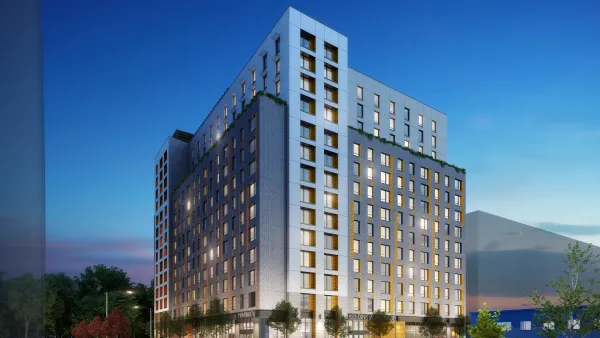In NYC, unlike most areas in the United States, buildings, rather than transportation, are the major source of carbon emissions. Passive buildings, with their negligible heating and cooling costs, could help meet carbon reduction goals.
According to the Passivhaus Institut, a "house built to passive standards uses less than a quarter of the energy of a traditionally powered home," writes Alison Gregor for The New York Times. While "few homes have been built in the U.S. that use the principles of the 'passive house' to reduce heating and cooling, passive buildings appear poised to enter New York City’s housing market in a much bigger way. Large projects delivering hundreds of new passive units to market are in the works, and city officials are watching closely."

Credit: © 2015 Passive House Alliance.
Passive Buildings defined:
Passive buildings maintain a comfortable interior climate without active heating and cooling systems — that means no more radiators or air-conditioning units for people who live in environments more temperate than New York’s. This is done using, among other things, an airtight building envelope and a system that exchanges interior and exterior air, usually an energy recovery ventilator. In New York, small heating and cooling systems are generally included in passive homes.
Passive Building potential in New York City
"Worldwide, buildings are responsible for about 40 percent of carbon emissions, but in New York City, it’s closer to 71 percent," writes Gregor. If New York City is to realize Mayor Bill de Blasio's goal of reducing greenhouse gas (GHG) emissions by 80 percent below 2005 levels by 2050, passive buildings may play an instrumental role.
FULL STORY: The Passive House in New York

National Parks Layoffs Will Cause Communities to Lose Billions
Thousands of essential park workers were laid off this week, just before the busy spring break season.

Retro-silient?: America’s First “Eco-burb,” The Woodlands Turns 50
A master-planned community north of Houston offers lessons on green infrastructure and resilient design, but falls short of its founder’s lofty affordability and walkability goals.

Delivering for America Plan Will Downgrade Mail Service in at Least 49.5 Percent of Zip Codes
Republican and Democrat lawmakers criticize the plan for its disproportionate negative impact on rural communities.

Test News Post 1
This is a summary

Test News Headline 46
Test for the image on the front page.

Balancing Bombs and Butterflies: How the National Guard Protects a Rare Species
The National Guard at Fort Indiantown Gap uses GIS technology and land management strategies to balance military training with conservation efforts, ensuring the survival of the rare eastern regal fritillary butterfly.
Urban Design for Planners 1: Software Tools
This six-course series explores essential urban design concepts using open source software and equips planners with the tools they need to participate fully in the urban design process.
Planning for Universal Design
Learn the tools for implementing Universal Design in planning regulations.
EMC Planning Group, Inc.
Planetizen
Planetizen
Mpact (formerly Rail~Volution)
Great Falls Development Authority, Inc.
HUDs Office of Policy Development and Research
NYU Wagner Graduate School of Public Service




























